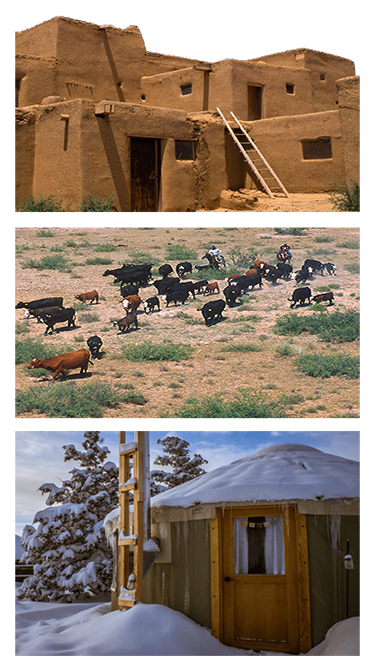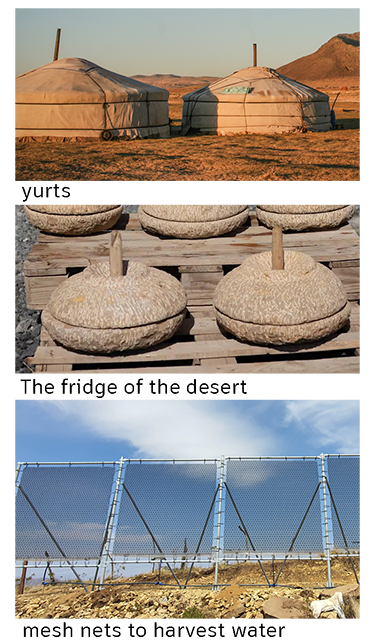
Deserts, or lands that receive barely 250 millimetres of precipitation per year on average, evaporate most of the rainfall delivered. Deserts are arid, dry, and parched lands and are on every continent on Earth, covering almost one-fifth of the land. With little water available for plants and other organisms, over one billion people, about a sixth of the world’s population, manage to live in deserts. Sandy deserts with sand dunes only cover 10% of all of the deserts in the world. Deserts can be hot and dry (also known as arid or subtropical), semi-arid, coastal, and cold.
Activity 1 – Hot Deserts

Hot deserts are the most prominent desert type. They have blistering daytime heat and steep nighttime temperature drops. They are typically located between 15° and 30° latitude, in regions such as North Africa, the Middle East, and parts of North America. Temperatures in these deserts often exceed 45°C (113°F) during the day, only to plummet near freezing after sunset. Rainfall is extremely scarce, rarely surpassing 250 mm per year. The terrain varies from vast sand and dunes to rocky plateaus and gravel plains.
Activity 2 – The SAHARA

Sahara (from the Arabic word for desert or ṣaḥrāʾ) is the world’s largest desert; it extends across most of the northern part of Africa from the Atlantic Ocean. Bordering the Atlantic Ocean in the west, the Mediterranean and Atlas mountains in the north, the Red Sea in the east, and the south the Sahel, a semiarid region that transitions between the desert to the north and humid savannas to the south. the actual area varies as the desert expands and contracts over time. [The Sahara Desert]( is the world’s largest hot desert, spanning over 9 million square kilometers. Despite the harshness, many organisms thrive here by adapting ingeniously. Plants like cacti evolved to store water in their thick stems, minimizing water loss. At the same time, animals such as the fennec fox and desert reptiles developed nocturnal habits to avoid the daily heat. Human settlements exist clustered around oases or are reliant on advanced irrigation systems. The Sahara, for example, is expanding southward by nearly 48 kilometers (30 miles) annually due to climate change and unsustainable land use.
Explore desert plants and animals in the Sahara. Draw them and note how they adapt to the intense heat and lack of water.
Activity 3 – COLD DESERTS

Cold deserts are located at higher altitudes or near the poles and experience long, freezing winters and short, cool summers. These regions receive minimal precipitation, often in the form of snow, amounting to less than 250 mm per year. Despite the icy temperatures, evaporation still outpaces precipitation due to strong winds and low humidity. The [Gobi Desert **](in Central Asia and the [Patagonian Desert*(in Argentina are prominent examples, as are the [Antarctic Dry Valleys*](, which are considered one of the driest places on Earth. These deserts feature gravel plains and saline soils rather than dunes. Vegetation is limited to mosses, lichens, and hardy shrubs that can survive the frost. Specially adapted mammals such as the Tibetan fox, snow leopards, and a range of birds and insects evolved to hibernate or migrate during harsh desert seasons. The environmental fragility of these deserts makes them highly sensitive to global warming, which is altering their snow and ice cover dramatically.
Research one cold desert animal and create a quick sketch showing its adaptation features (fur, claws, coloring, etc.).
Activity 4 – Semi-Arid Deserts

Semi-arid deserts represent a middle ground between true deserts and temperate zones. These areas receive slightly more rainfall, between 250 and 500 mm annually, and support a greater diversity of plants and animals—temperatures in summer range from 20°C to 35°C. At the same time, winters bring frost and occasional snowfall. The soil is typically loamy or sandy with better water retention than arid regions, allowing for some seasonal vegetation. The Great Basin Desert are examples of semi-arid deserts. These regions often contain grasses, shrubs, and small drought-resistant trees. Animal life features rabbits, coyotes, birds of prey, and many insect species. Daytime activity is more common here than in hotter deserts. However, semi-arid regions are particularly vulnerable to human pressures like overgrazing and intensive agriculture, which can quickly degrade land and lead to complete desertification.
Locate a semi-arid desert near your region on a map. When you look at satellite images, what kind of vegetation do you notice?
Activity 5 – COASTAL Deserts

Coastal deserts are found along ocean margins where cold sea currents suppress cloud formation and rainfall, creating dry but fog-prone environments. These deserts have moderate temperatures compared to hot or cold deserts, but they receive very little rain, sometimes less than 50 mm a year. However, fog plays a crucial role in sustaining life. In places like the [Namib Desert] in Namibia and the [Atacama Desert]( in Chile, plants and animals rely on the moisture in fog to survive. The Namib beetle, for example, collects water droplets on its back by facing the fog wind, while certain plant species have hairy leaves to trap mist. The soil in coastal deserts is often salty and nutrient-poor, limiting agriculture without technological support. Despite these challenges, coastal deserts are increasingly studied for innovative solutions such as fog harvesting to supply water to dry urban centers. The Atacama Desert, which once went 400 years without measurable rain, now hosts cutting-edge astronomical observatories due to its clear skies and dry air.
Research how fog harvesting works. Could it be a sustainable solution for your city?
Activity 6 – HUMAN LIFE IN DESERTS

People have lived in deserts for thousands of years by developing innovative, climate-specific adaptations. In hot deserts like the Sahara and Arabian regions, homes are built with thick walls for insulation, narrow streets for shade, and clothing that protects from heat while allowing airflow. Water is often collected through underground channels or stored in cisterns.
In semi-arid deserts such as Central Asia and parts of the U.S., communities rely on seasonal farming, rainwater harvesting, and livestock herding. Nomadic lifestyles are everyday, and land is used carefully to avoid overgrazing.
Cold desert dwellers, like those in Mongolia’s Gobi, face extreme cold and dryness. Portable homes like yurts are designed for warmth and flexibility, while people raise hardy animals like yaks and store food for long winters.
In coastal deserts like the Atacama in Chile, residents collect water from fog using mesh nets and rely on salt mining, fishing, or tourism. Cities like Lima, built in desert zones, survive through advanced water systems and glacier runoff.
Across all desert types, people use renewable energy, smart irrigation, and climate-responsive buildings to improve resilience. Innovation and tradition make desert life possible. Look up a traditional or modern home in any desert. Save or sketch its design and note how it adapts to heat, cold, or dryness.
Activity 7 – DESERT ADAPTATIONS

Across the diverse landscapes of deserts, people have embraced renewable energy, smart irrigation, and climate-responsive buildings to bolster their resilience in these challenging environments. The blend of innovation and tradition creates a vibrant tapestry of life that thrives against the odds.
Take, for example, the resilient souls of cold deserts like Mongolia’s Gobi, where they brave both extreme cold and aridity. Here, the iconic yurt—an emblem of warmth and flexibility—serves as their portable sanctuary, while hardy animals such as yaks provide sustenance. These inhabitants also master the art of preservation, storing food to outlast the long, harsh winters. In the coastal deserts, such as the stunning Atacama in Chile, residents have developed ingenious methods to survive. They skillfully harvest water from fog using delicate mesh nets, while also depending on salt mining, fishing, and tourism for their livelihoods. Meanwhile, cities like Lima, nestled within desert borders, sustain life through sophisticated water systems and the vital runoff from melting glaciers.
Explore the remarkable designs of traditional or modern homes from any desert region, and consider saving or sketching their unique structures. Reflect on how these architectural marvels have adapted to the extremes of heat, cold, and dryness, showcasing the ingenuity of human resourcefulness in the face of nature’s challenges.
Review
- What is a typical characteristic of hot deserts?
- What is causing the Sahara Desert to expand southward by nearly 48 kilometers annually?
- Which of the following is a defining feature of cold deserts?
- Which of the following describes a semi-arid desert?
- How do organisms in coastal deserts often obtain water?
- How do people in coastal deserts like the Atacama typically collect water?
- How do people in coastal deserts like the Atacama typically collect water?
- What is one modern adaptation used in desert cities like Lima to sustain life?
- What is one modern adaptation used in desert cities like Lima to sustain life?
Explore
- ACTIVE WILD Deserts of the World
- Active Wilds Dserts of the World
- Atamama Desert
- Death Valley
- Gob Desert Facts
- Gobi Desert
- Kalahara Desert Facts
- NAT GEO Deserts
- Nat Geo Exploring Atacama Desert Stargazing
- SAHARA INDIGENOUS PEOPLES
- Sonoran Desert
- Video Antartica Desert World's Largest
- Video Mojave Desert
- Video Patagonia Desert
- Video Rub Al Kali Desert


















































